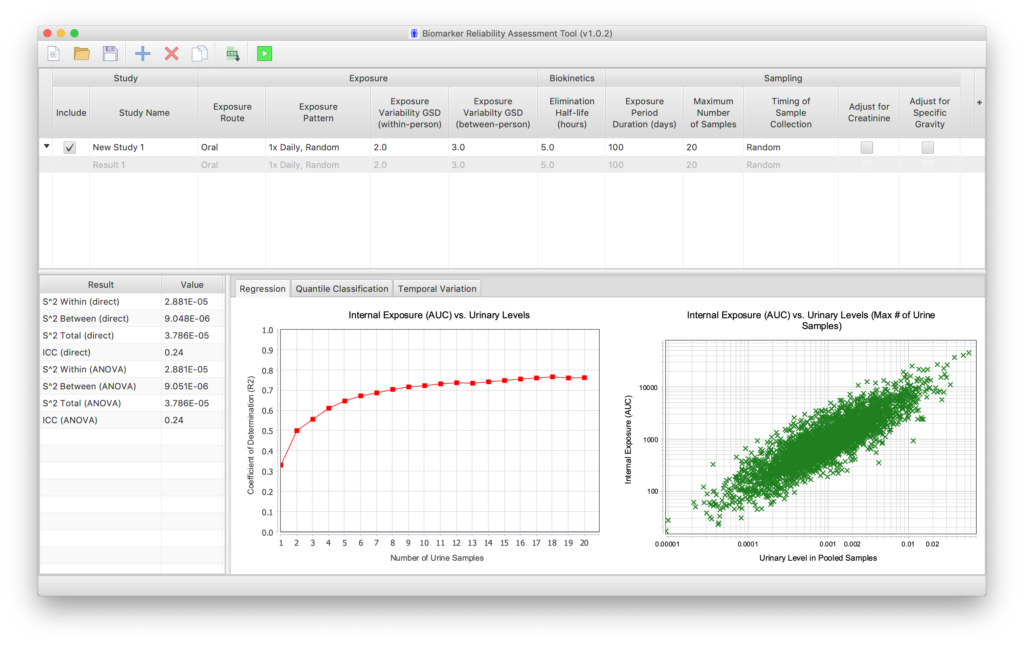In epidemiologic and exposure research, biomonitoring (i.e., measuring the concentration of chemicals or their metabolites in biological samples) is often used as the basis for assessing human exposure to environmental chemicals. Determining the type and the number of samples needed to obtain reliable estimates of exposure is challenging, especially for non-persistent chemicals. The Biomarker Reliability Assessment Tool (BRAT) was developed to help researchers set targets to improve exposure assessment in studies of chemicals with a short half-life. The BRAT software uses a simple pharmacokinetic model to simulate exposure, internal levels, and resulting urinary levels in individuals from a population based on user-specified inputs (e.g., biological half-life, within- and between-person variability in exposure). Based on internal levels (a toxicologically-relevant exposure metric) and urinary levels in the simulated population, the tool evaluates – through linear regression and quantile classification – the accuracy of the estimation of internal levels depending on the number of urine samples. The graphics generated by BRAT provide a visual basis to optimize the number of urine samples to be collected and timing of sample collection for exposure assessment.

BRAT is free to download and use, but requires registration. To download the current version of BRAT, please visit the registration page here.
For any problems related to software registration, download or installation, please contact Magnolia support at team@magnoliasci.com.
For questions related to BRAT usage, or methodologies implemented in BRAT, please contact Dr. Marc-Andre Verner via email at marc-andre.verner.1@umontreal.ca.
